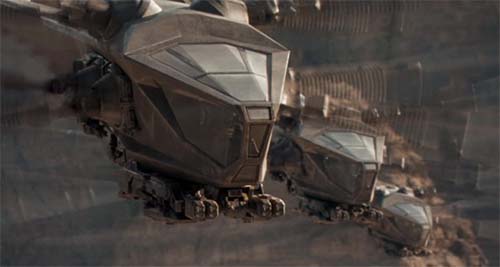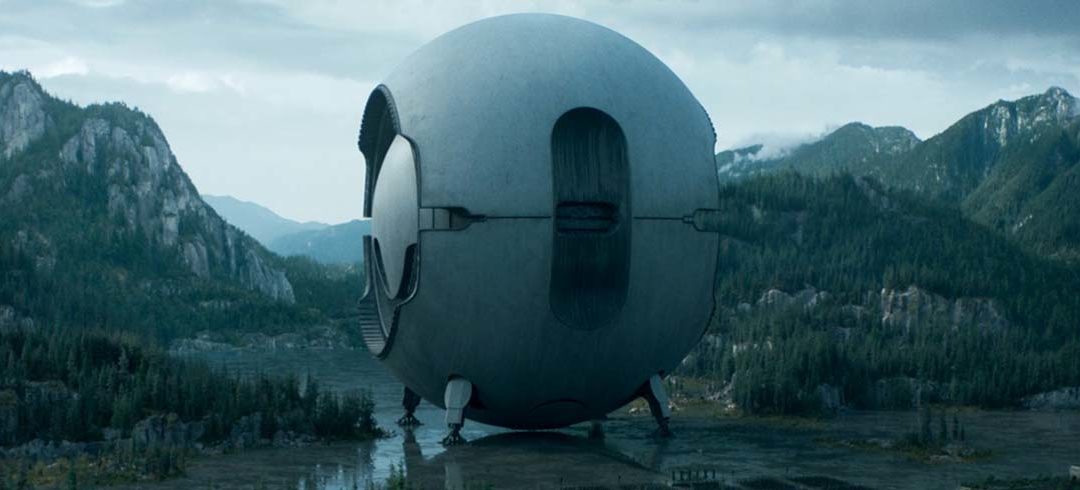For the 14th consecutive year, each Academy Award nominee for the Best Visual Effects used NVidia technologies.
The 94th annual Academy Awards ceremony, taking place next Sunday (March 27), has five nominees in the running:
- Dune
- Free Guy
- No Time to Die
- Shang-Chi and the Legend of the Ten Rings
- Spider-Man: No Way Home
From flying spacecrafts to giant sandworms, the futuristic visuals in Dune were produced by Academy-Award winning studio DNEG.
 For the sci-fi film, DNEG contributed to 28 sequences and almost 1 200 visual effects (VFX) shots, with each elaborate element designed to bring director Denis Villeneuve’s vision to life. To do so, the studio worked across multiple locations with remote artists using virtual workstations powered by NVIDIA RTX.
For the sci-fi film, DNEG contributed to 28 sequences and almost 1 200 visual effects (VFX) shots, with each elaborate element designed to bring director Denis Villeneuve’s vision to life. To do so, the studio worked across multiple locations with remote artists using virtual workstations powered by NVIDIA RTX.
DNEG was the first studio to implement NVidia virtual GPU software at scale and has continued its pioneering efforts with NVidia Omniverse Enterprise .
“Every show we get is different from the last, and NVidia RTX with vGPU lets us scale the memory and performance characteristics up or down to meet the needs of our artists,” says Daire Byrne, global head of systems at DNEG.
DNEG secured a second Academy Award nomination with the latest James Bond installment, No Time to Die – the first Bond film to receive a VFX Oscar nomination since 1979’s Moonraker.
To create the film’s action-packed scenes, explosions and massive environments, DNEG delivered over 500 VFX shots. Its team used detailed references and scans to help design everything — from a glider and a sinking ship, to the island headquarters and thrilling car chases.
Three-time Oscar-winning studio Digital Domain received two VFX nominations this year for Free Guy and Spider-Man.
The team created almost 350 VFX shots for Free Guy, for assets like digital doubles to entire computer graphics-based cities.
Free Guy is also one of the first feature films that used Digital Domain’s face-swapping tool, Charlatan.
Charlatan replaces the face of a character with a hand-created facial model, and then combines it with the original performance using AI. This provides much more realistic results when working with digital doubles.
Digital Domain also helped build the visuals for “Free City,” the game environment where the film takes place.
For Spider-Man: No Way Home, Digital Domain digitally recreated 2,5 square miles of New York City, one of the biggest computer graphics environments the studio has ever built.
A dramatic fight sequence — which shows the web-slinging hero battling the villainous Doc Ock and his mechanical arms — takes place on a bridge, with visuals and computer graphics elements that include various people, vehicles and weather conditions.
Digital Domain also used a digital double for Doc Ock, a character that actor Alfred Molina first played 18 years ago in the film Spider-Man 2.
Another one of Disney’s most recent Marvel films, Shang-Chi and the Legend of the Ten Rings, showcased magical visuals from creative studio Weta Digital.
Weta worked on 300 shots and VFX sequences that included an epic dragon battle, realistic water simulations and the magical rings themselves. One of Weta’s challenges was to create the breathtaking sequences with the Great Protector, a wingless dragon, and the Dweller-in-Darkness, a creature made up of 128-million polygons.
Weta created custom rigs to deliver performances that emphasized the massive scale and weight of each creature. The team also developed a new AI system to assist with facial performances on the digital double of Shang-Chi’s father and main antagonist, Xu Wenwu.
All images courtesy of DNEG

